
 |
 |
 |
 |
 |
| Epithelial Tissue is a tissue that forms a covering. Ex: Skin On one side of the tissue, there is a “free surface” like air or fluid. It is connected to the underlying tissue by a basement membrane that is difficult to pass through. Epithelial tissue is nonvascular, it has no blood vessels. | |||||
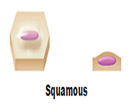 |
Squamous- Flat, like cheek cells | 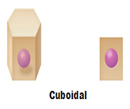 |
Cuboidal- a cube, like salivary glands | 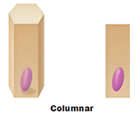 |
Columnar- a column shape, like fallopian tubes |
There are two different arrangements of epithelial tissue cells. 1.) Simple- a single layer of cells that allows air to pass through 2.) Stratified- more than one layer of cells Examples: |
|||||
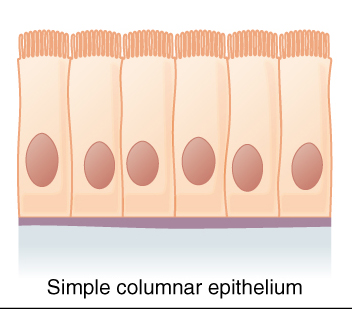 |
This arrangement forms the lining of the stomach and intestines. The nuclei are located near the basement membrane. | ||||
 |
The cells make several layers and are cube-shaped, elongated, and irregular. This arrangement forms the lining of the trachea and bronchi. It also lines the kidney tubules and ducts of salivary glands. | ||||
 |
The cells are arranged into a single, flat layer. This form of epithelium forms walls of capillaries and the air sacs of the lungs. | ||||
 |
Cilia commonly lines and moves mucus out of the airway. The nuclei are located at different levels within the cells. | ||||
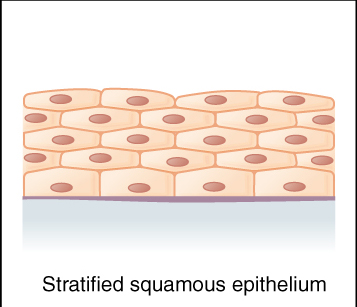 |
The younger cells are cuboidal, while the older cells are flattened. This forms the lining of the oral cavity, anal canal, and vagina. | ||||
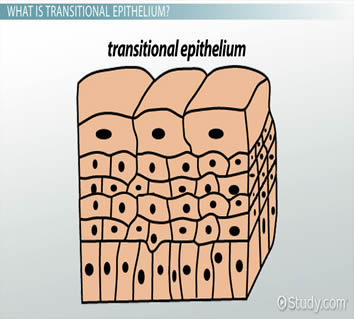 |
Transitional Epithelium forms the inner lining of the urinary bladder. | ||||